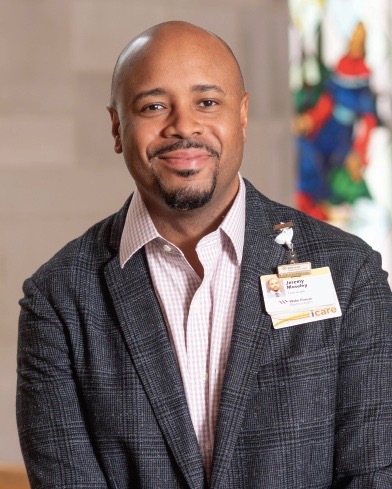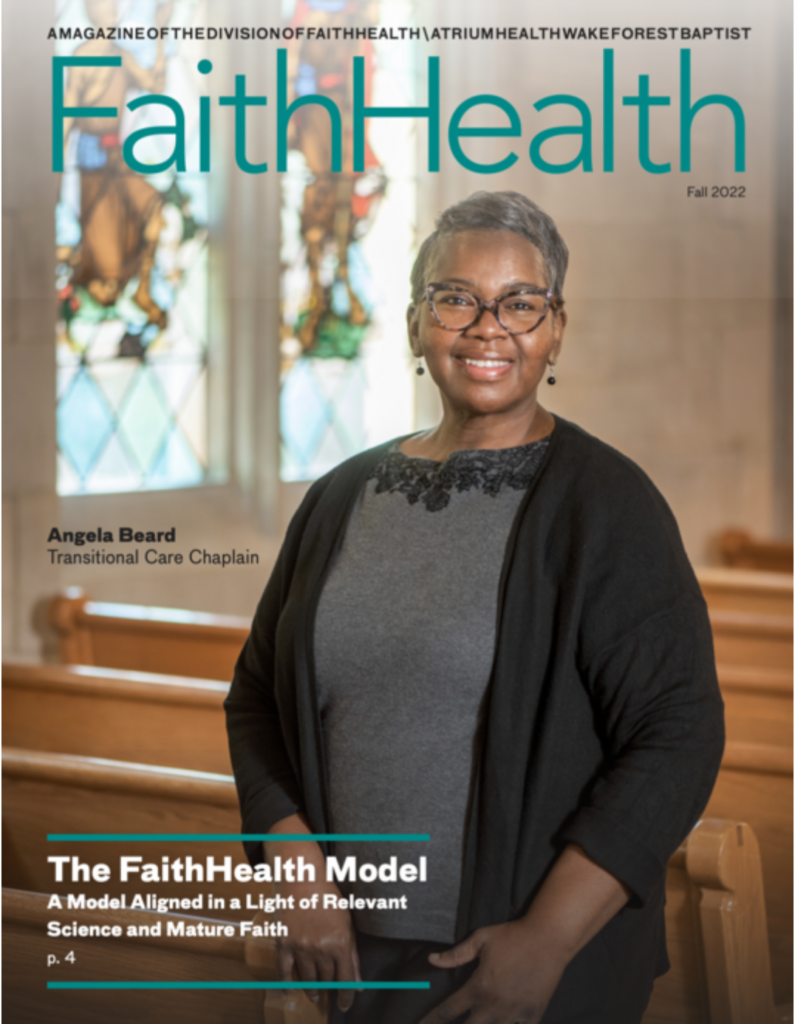By Jeremy Moseley
Supporters and connecters. I oversee a group of “supporters of health.” Traditionally, they’re called community health workers. These former environmental services staff are our hands, eyes and feet out in the community. They perform a lot of the home visitation that our patients need or request. These are often individuals who do not have family members or social networks involved in their care. We provide a sort of extended family through our supporters. I also oversee a group of “connectors” who provide similar support but who also build the social networks around the patients.
Supporters are medical center employees, part of our operations, while connectors are more of a contracted role, paid a stipend a day or two per week. The supporters are more directly involved. If you think of community case management, of what social work would look like in the community, they provide a similar function. Their skill set allows them to enter into complex neighborhoods and communities.
Connectors can do some of the same but are often individuals who work full time or are bi-vocational, so they may not have the time or ability to do some of the hands-on work our supporters would do. But they have relationships that extend beyond our supporters’ network. They bring new partners to the table such as civic organizations, faith communities, sororities and fraternities. They have direct relationships with those entities. Angela Brown, our patient or client referral coordinator, handles the influx of referrals we receive over the phone, through email, through our electronic medical records system, through our website and through walk-ins. She speaks with the individual or provider, assesses the referral to see if it’s appropriate for FaithHealth to get involved, and makes sure we get permission to get involved. Then, she assesses what type of network or staff member should get involved.
It takes a village. Most of our success stories involve multiple components of our health system, such as our discharge planners or care coordinators. Or we may make a referral to CareNet for more counseling. These successes involve the entire health system inside the walls and the team outside in the community. It takes a village. One individual had been in-patient for about a month. The care coordination team was unable to figure out how to discharge this individual because they had come into the hospital walking but would be discharged with the use of a wheelchair. That person’s total life had just changed. Who else to call but FaithHealth? We identified the need for a wheelchair ramp in order for the patient to gain entry into their home. We had a Baptist connector who knew the ministries within the Baptist network involved with building ramps. He immediately contacted one of our local congregations, and the lead member of that ministry reached out to the patient’s family. He arrived at the patient’s house to assess the situation and look at coding situations, so they get very detailed about their methods. That build took no longer than a week or two. The materials were paid for in part by that congregation but also with involvement with Care Coordination and FaithHealth. As soon as that ramp was built, the patient was discharged.
Beloved community. FaithHealth is about creating a beloved community. You can’t put a timeframe on that. And not putting a time frame on that has allowed us to move at the speed of trust. That requires us to not only meet short-term metrics but also plan for long-term goals and solutions.
Jeremy Moseley is director of FaithHealth Community Engagement. He formerly worked with the North Carolina Division of Public Health.
Listen to the Podcast with Jeremy Moseley and Emily Viverette.

